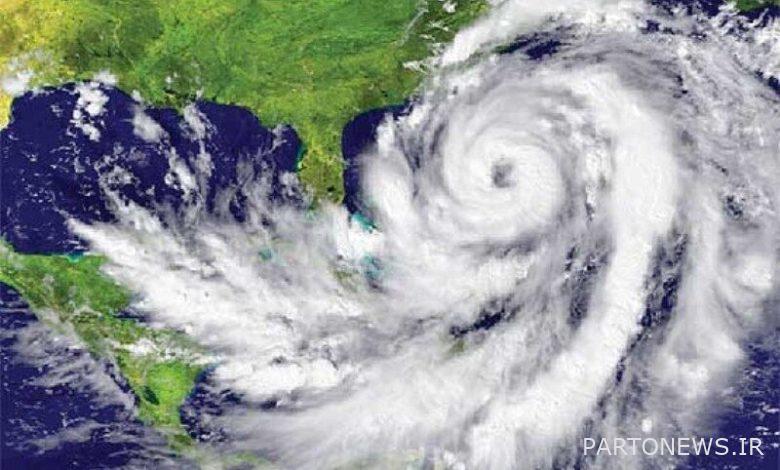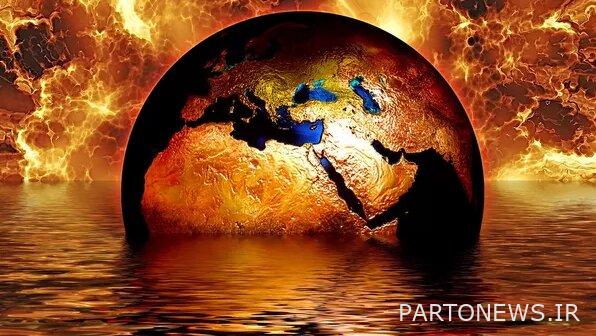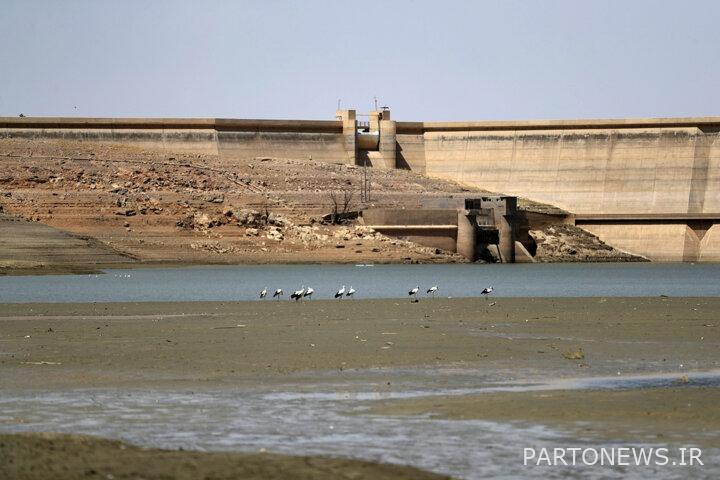The pressure of Lanina’s hands on Aseman Khorasan Razavi’s throat

According to IRNA, climate change is one of the biggest challenges of the century, and with the increase in global air temperature, drought becomes more acute, and according to international climatology research, global warming is a serious threat to life.
Climatic changes in one region also affect other regions, such as “La Niña and El Nino” phenomena, which are caused by temperature changes in the surface of the Pacific Ocean, but also affect the precipitation situation in other parts of the world.
“La Niña” is a phenomenon in which the water in the central and eastern parts of the equatorial Pacific Ocean is colder than normal, while in the “El Nino” phenomenon, the water temperature becomes warmer than the average sea temperature.
Due to its location in the arid and semi-arid region, Iran has been suffering from drought in the last 30 years and there has been a decrease in rainfall in all parts of the country. It has happened in the Middle East and Iran and this situation has become more acute in the last three years than before, so that according to the announcement of the Ministry of Energy, for the third year in a row, our country will face a decrease in the amount of rainfall, water shortage, and a decrease in the amount of reserves of dams.
According to the head of the National Center for Drought and Crisis Management of the Meteorological Organization, the amount of autumn rainfall in October this year was 80% less than normal, with about eight tenths of a millimeter of rain recorded, and this situation is more acute in the eastern regions of the country and consequently Khorasan Razavi province. And the amount of rainfall in this province this year has decreased by more than 40% compared to the same period last year.
Dry autumn in Iran and more severe conditions in the east of the country
According to climatological forecasts, this year Iran is facing the third autumn and winter with little rainfall and dry, and not only the amount of rainfall will decrease, but also the air temperature is warmer than in the past, which prevents the storage of snowfall in the highlands for use in the spring seasons. And it’s summer.
A climatologist and faculty member of Ferdowsi University of Mashhad’s Department of Geography in an interview with IRNA reporter said about this year’s dry autumn: Unfortunately, all forecasts show that this autumn in the Middle East and our country will be the third dry autumn with a decrease They will experience rain.
Referring to the continuation of the drought this fall, Dr. Abbas Mofidi added: In general, in the coming months, a lack of rainfall is expected compared to normal conditions, and this phenomenon is more acute in the northern half of the Middle East and Iran.
He added: We will not have an increase in rainfall this winter, and according to the forecast models, from January this year onwards, the amount of rainfall will be normal and less than normal. There will be snow in the mountains and we will still not be in a good situation.
The assistant professor of climatology of Ferdowsi University of Mashhad continued: According to forecasts, the average temperature in the country and the region is higher than the usual winter conditions, which creates an acute problem, and snowfall, which is one of the most important sources of water for use in spring and summer, It will not be stored in high altitudes and these resources will be lost with the increase in temperature.

We are in the longest La Nina of the century
Dr. Mofidi noted: The climatic condition of some parts of the planet has a significant effect on the climatic conditions of other parts, the Pacific Ocean being one of these regions.
The faculty member of the Geography Department of Ferdowsi University of Mashhad added: The temperature changes of the water surface in the tropical parts of the ocean affect the amount of rainfall and the temperature in other places and every year it causes changes in the climatic conditions of the planet.
Dr. Mofidi continued: In some years, this region of the Pacific Ocean, especially in the eastern half, is colder than usual and in some years it is warmer.
He said: “When the temperature of the ocean surface becomes colder than normal, the La Nina phenomenon occurs, and we are currently going through one of the longest La Nina phenomena of the century, and the temperature of the ocean water in the eastern half is about 1.5 degrees lower than normal.” which has led to a decrease in rainfall and an increase in temperature in the Middle East region and the country.
This climatologist continued: According to research, when La Niña occurs, some regions of the world experience a period of heavy rains and others experience a period of low rains and drought, and Iran and the Middle East are in the second group, and due to this phenomenon, they are affected by drought. be. Since 2020, unfortunately, the La Nina phenomenon has occurred in our region and we have been in one of the longest La Ninas of the century.
The faculty member of Ferdowsi University of Mashhad geography department added: In recent years and especially in the last decade, the Middle East and Iran have gone through a very dry autumn and dry winter, and they are still involved in this situation.
Dr. Mofidi added: Based on these studies, the La Nina phenomenon continues, but it is predicted that this phenomenon will be neutralized by the middle of winter this year, but we will still miss the main period of rains.

We do not have a clear vision of normal rainfall in the east of the country
The associate professor of climatology of Ferdowsi University of Mashhad also stated regarding the rainfall situation in the east of the country: this fall, the amount of rainfall in the country, especially in the east and northeast, will be more than 50% less than normal.
Dr. Azar Zarin added: Also, due to the dominance of the La Nina phenomenon, there is not much chance of snowfall this winter, and if it rains, due to the warm weather in winter, these snows, which are the main sources of water management in spring and summer They can be, they melt.
The faculty member of Ferdowsi University of Mashhad Geography Department continued: Based on this, there is no clear prospect of normal rainfall in the east of the country, and the drought resulting from the La Nina phenomenon will have a negative impact on water resources and reserves.
Reduction of rainfall in Razavi Khorasan
Khorasan, Razavi and Mashhad provinces this year have faced a relative decrease in rainfall compared to previous years and a sharp decrease in rainfall compared to the long-term period.
According to the head of Khorasan Meteorological Department, Razavi, the average rainfall of the province in the current crop year, from the beginning of October to the first week of November, was 2.7 mm, which has decreased by 42% compared to the statistical period.
In an interview with IRNA reporter, Ali Asghar Dehghan added: The average statistical period of Khorasan Razavi rainfall stations is 5.5 mm, although the amount of rainfall in the current crop year compared to the same period of the previous year increased by 0.9 mm to 2.7 Is.

80% of the reservoirs of dams in the province are empty
The CEO of Khorasan Regional Water Company Razavi also stated in an interview with IRNA reporter: The amount of rainfall in this province in the agricultural year of 1401-1401 was about 146.9 mm, while this amount was 186.5 mm in the same long-term period in the province. , that is, rainfall has decreased by 21% compared to the long-term period.
Alireza Taheri added: The water available in the reservoirs of the province’s dams is 313 million cubic meters, which was 434 million cubic meters in the same period last year, and now only about 20% of the volume of the reservoirs of the province’s dams has water, which is not a good situation at all.
The CEO of Mashhad Water and Sewerage Company also told IRNA reporter: The water resources situation of this metropolis is very worrying due to the 67% decrease in rainfall compared to the long-term period.
In an interview with IRNA reporter, Hossein Esmailian added: The drought in the country is severe, especially in Khorasan Razavi and Mashhad, and the amount of drought in this metropolis in the last 2 wet years has been unprecedented in the last 70 years.
He noted: The amount of rainfall in Mashhad this year has decreased by 67% compared to the long-term period and by 22% compared to the same period last year.
It goes without saying that the drought prevailing in the country and Razavi Khorasan affects various aspects of life and the agriculture, industry and economy sectors are affected by this situation and the supply of drinking water to the citizens is facing tense conditions.
According to the opinion of experts, managers and officials, short-term, medium-term and long-term planning should be done by taking into account climatic phenomena to face water shortage conditions and overcome this crisis with minimal damage, which is emphasized by the 13th government. and, of course, the role of people’s support is also undeniable to effectively face and overcome these conditions.

